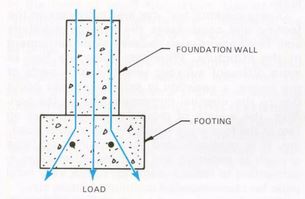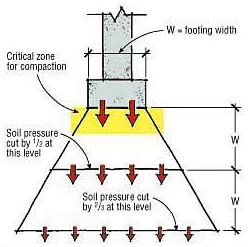Let’s understand the importance of laying a foundation for a building.
Table of Contents
What is called the foundation of a building?
The foundation of a building is the lower part of the structure that is below ground level and provides support to the rest of the building. It is typically made of concrete and masonry materials and its purpose is to transfer the weight of the building to the ground and keep the building stable.
Why is it necessary to provide a foundation to a building?
A foundation is necessary for a building because it provides a stable base for the structure to stand on and transfers the weight of the building to the ground. The foundation must be strong enough to support the weight of the building, resist settling and settling and distribute the load evenly to avoid damage to the building. It is also designed to keep the building level and stable, and to resist lateral forces such as wind and earthquakes. A proper foundation is crucial for the safety and longevity of the building.

What will happen if a building is constructed without a foundation?
If a building is constructed without a foundation, the building will not have a solid, stable base to support its weight. As a result, the building will be at risk of collapsing or suffering significant structural damage.
Without a foundation, the weight of the building will be transferred directly to the ground, which may cause the soil to settle and shift. This can cause cracks to form in the walls and floors, and eventually lead to the building becoming unstable and potentially collapsing.
Additionally, without a foundation, the building will not be anchored to the ground, and will be more susceptible to damage from environmental factors such as wind, earthquakes, and flooding.
In conclusion, a foundation is a critical component of a building, providing the necessary stability and support to ensure the safety and integrity of the structure. Building a structure without a proper foundation is not only dangerous, but it also violates building codes and regulations, and can result in significant financial losses and potential legal consequences.

What are the different types of foundations in construction?
There are several different types of foundations used in construction, including:
- Shallow Foundation: A shallow foundation is used for buildings with a low load-bearing capacity. It is typically built close to the surface of the ground. Examples include spread footings and slab-on-grade foundations.
- Deep Foundation: A deep foundation is used for buildings with a high load-bearing capacity. It is constructed below the surface of the ground and provides support for tall buildings and structures with heavy loads. Examples include piles and caissons.
- Pier and Beam Foundation: A pier and beam foundation is a type of shallow foundation that consists of concrete piers and beams that support the weight of the building.
- Mat Foundation: A mat foundation is a type of shallow foundation that consists of a concrete slab that covers a large area and supports the weight of the building.
- Trench Foundation: A trench foundation is a type of shallow foundation that is used for buildings with a low load-bearing capacity. It is typically constructed by digging trenches and filling them with concrete.
These are some of the most common types of foundations used in construction. The type of foundation used depends on several factors, including the soil conditions, the type of building, the size of the building, and the load-bearing capacity required.












